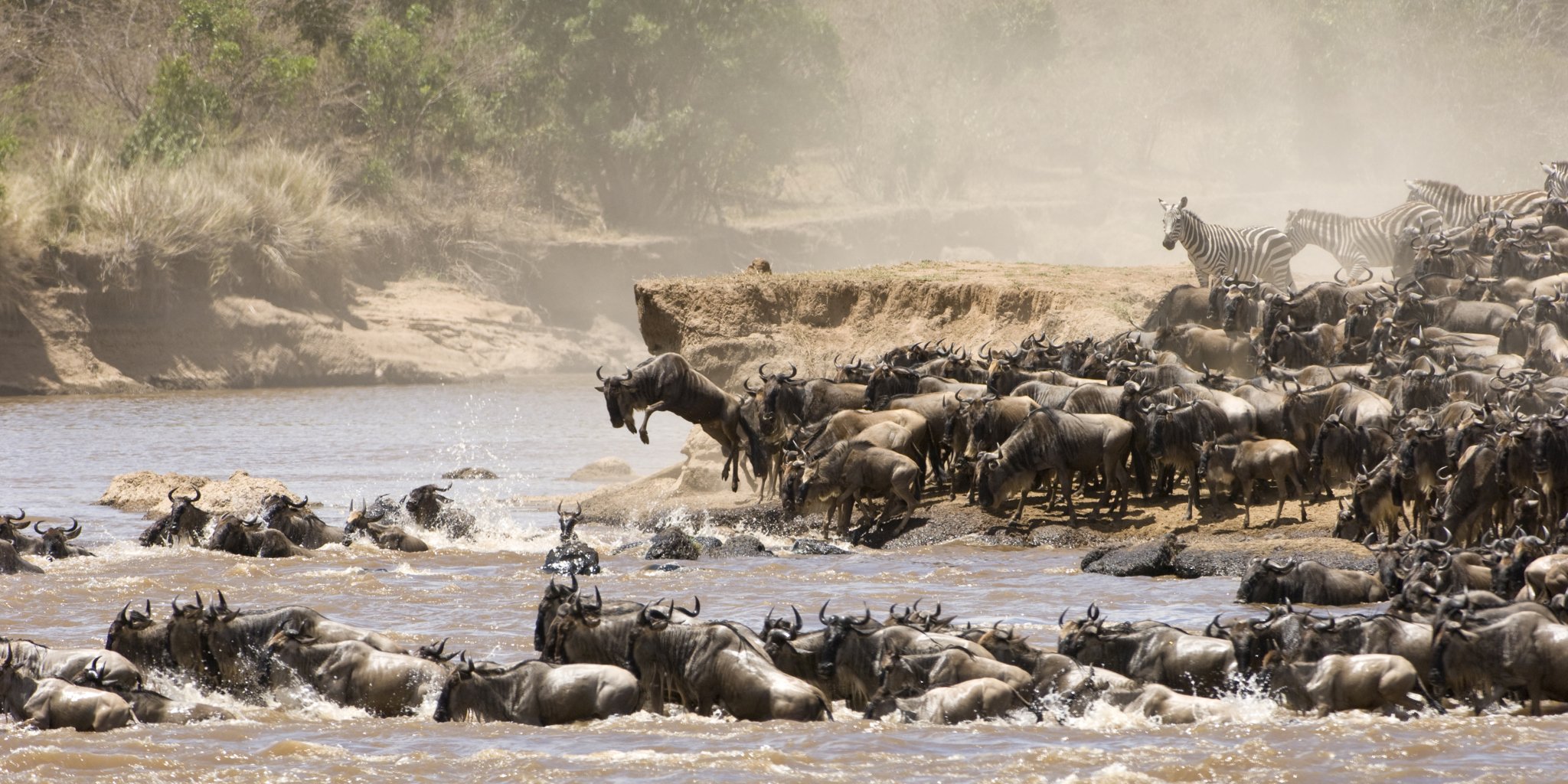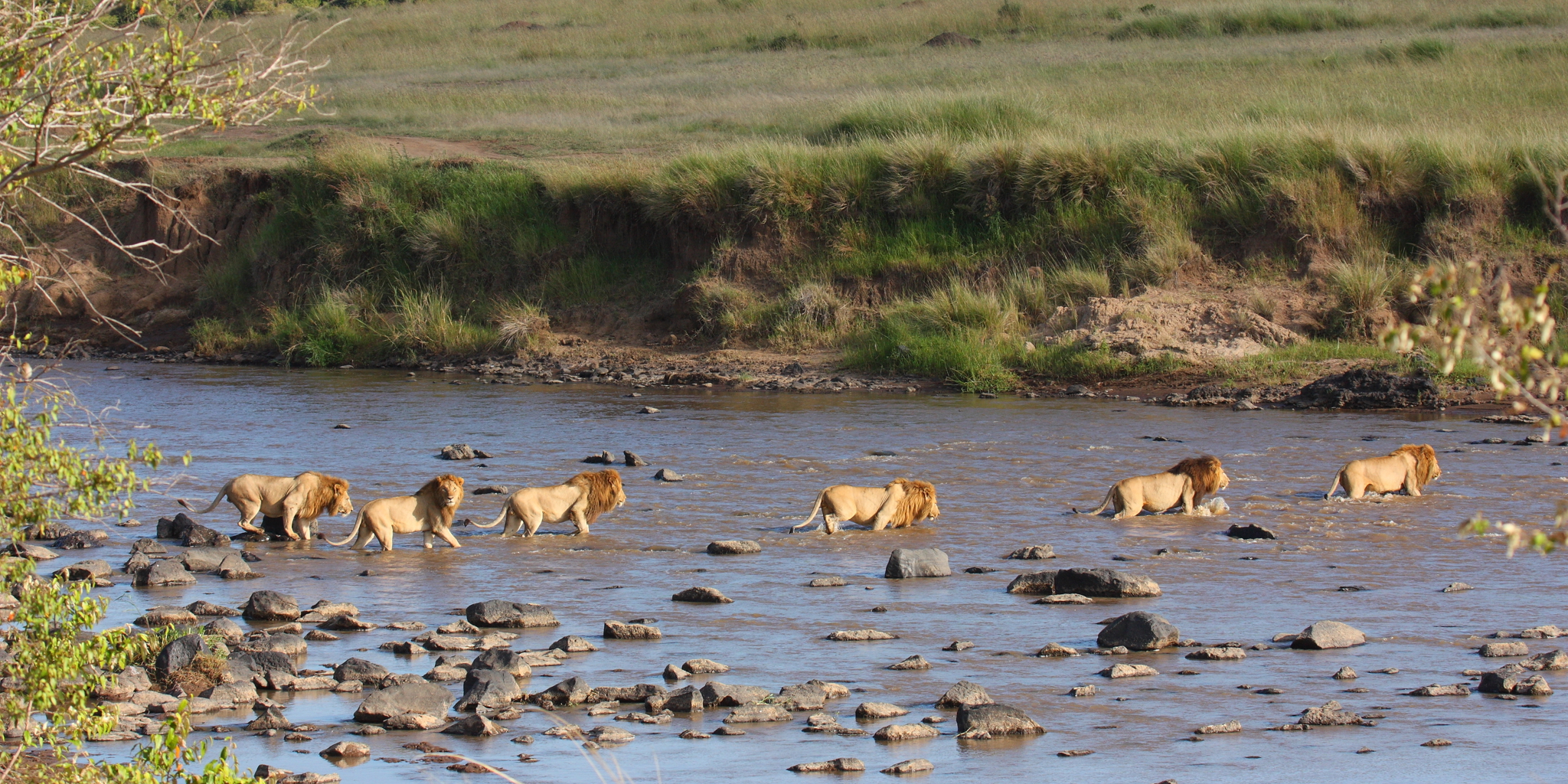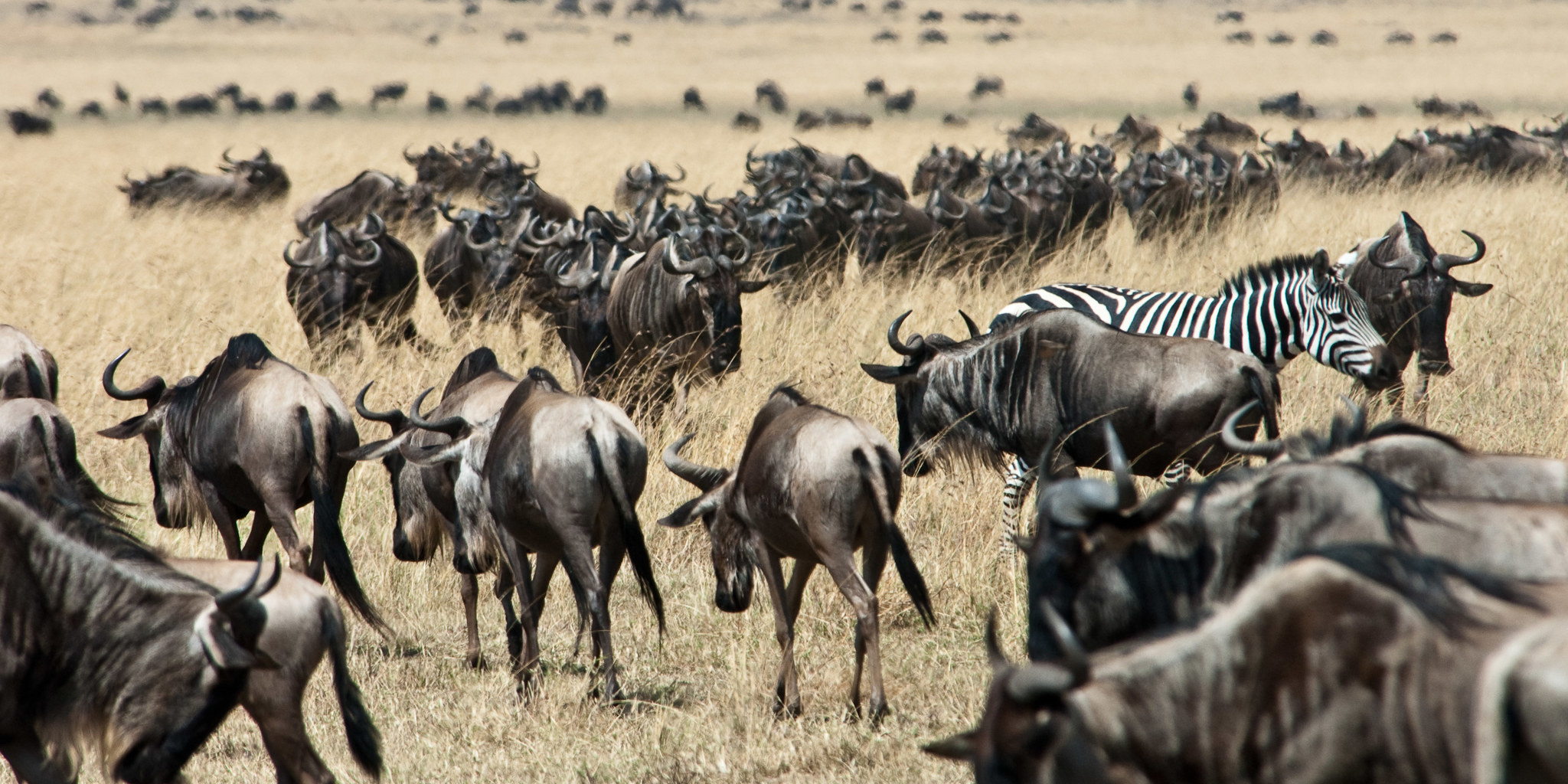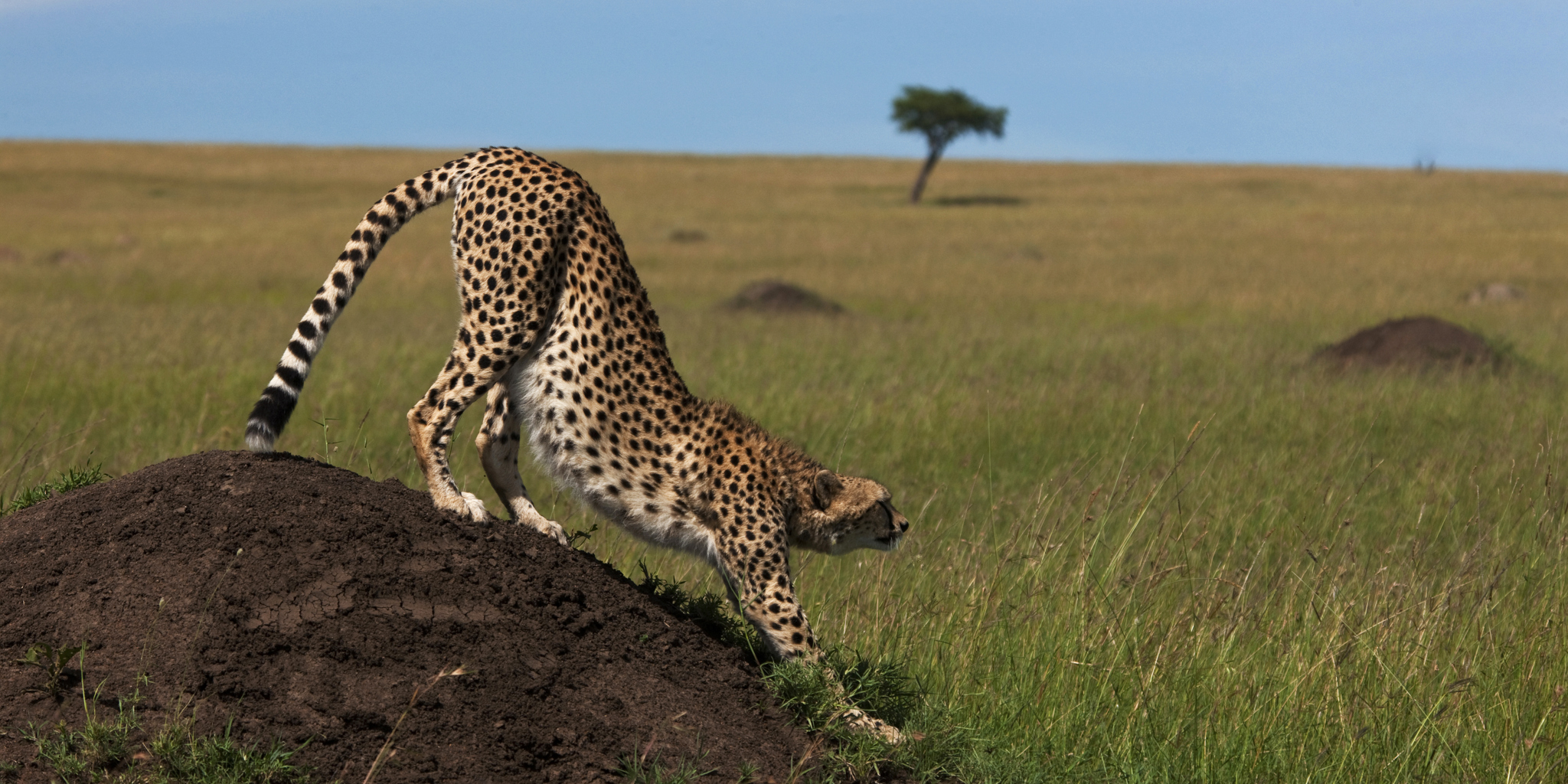Outside the Maasai Mara, the Migration does not follow a strict route. It varies from year to year, depending on where the grass is greenest following the rainy season throughout such regions as Loliondo, Moru Kopjes, Seronera, Grumeti and Ikorongo. Predator populations have an important role to play too, particularly during the calving season in February, when the herds do their best to avoid encountering big cats hoping to snatch a snack on the open plains. However, the Maasai Mara is always part of the wildebeest itinerary, so great game viewing here is guaranteed!
The first crossings of the Mara River occur in July and continue well into October, becoming more frequent in the later months of the year. In addition to the hundred thousands of wildebeest, there are substantial concentrations of zebra and only slightly smaller numbers of Grant’s and Thompson’s gazelles as well as eland and impala. The rush over the river is a breathtaking sight! In addition to the danger of being swept away by the water, the herds face the horrendous prospect of being captured and eaten by the immense crocodiles that lie in wait. Any unfortunate individuals that are seized during the cross are torn literally limb from limb, vultures swooping in to feast on the flesh once the crocs have had their fill. Be warned – it can get pretty gruesome out here!
For the vast majority of herbivores that do reach the Maasai Mara’s sprawling savanna, further perils await in the shapes of the big cats – lion, leopard and cheetah! Relentlessly, these fierce felines prowl the plains. Game drives in the park yield amazing sightings and fantastic photo opportunities, while a lot of lodges offer hot air balloon safaris too! If you are looking for supersize safari, this really is the place to come. Just get in touch with us for all the info you need, including the best camps to stay!
 UK / International
UK / International
 USA
USA
 CA
CA
 Australia
Australia

































